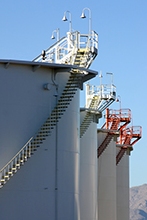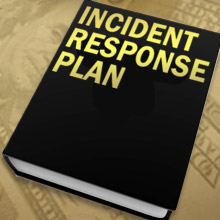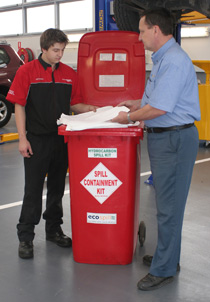Pollution Prevention and Control
 At Remediation Strategies, we hope that none of our clients ever have to deal with an environmental incident. However, in our experience, the chances of an incident occurring are significantly reduced through effective planning and the implementation of pollution prevention and control measures. These can include the following:
At Remediation Strategies, we hope that none of our clients ever have to deal with an environmental incident. However, in our experience, the chances of an incident occurring are significantly reduced through effective planning and the implementation of pollution prevention and control measures. These can include the following:
Compliance Audits
Undertaking compliance audits on all site activities and fuel/product storage ensures they are in line with the latest guidance and current best practice. Where non compliance is identified, corrective action plans should be prepared to upgrade facilities/documentation to the required level.
Pollution Prevention Equipment
The installation of pollution prevention equipment such as bund liners, high level bund and interceptor alarms and enviro valves can provide an additional level of environmental protection. Equipment such as this provides advance warning of potential spill situations (such as full interceptors and high bund water levels) and can seal a site’s drainage system remotely at the flick of a switch in the event of an incident (the envirovalve).
 Pollution Incident Response Plans
Pollution Incident Response Plans
The preparation of a site Pollution Incident Response Plan (PIRP). UK Government best practice advocates that all sites should prepare a PIRP and the Environment Agency provides clear guidance on the contents of such documents within their PPG21 publication. The basic principle behind the PIRP is to prepare a document that collates all the relevent site information needed to respond to a spill (such as contact numbers, tank storage details, drainage plans and the location of spill equipment) to assist site operatives to act effectively.
Spill Kits
 The provision of spill kits and spill equipment to minimise the impact of any spillage. A site should always ensure that an adequate level of spill protection in the form of spill kits and absorbents is available and that used absorbents are replenished once utilised. Where spills could occur adjacent to sensitive areas, such as drains or watercourses, consideration should be given to additional protective measures such as clay mats or other drain plugging devices.
The provision of spill kits and spill equipment to minimise the impact of any spillage. A site should always ensure that an adequate level of spill protection in the form of spill kits and absorbents is available and that used absorbents are replenished once utilised. Where spills could occur adjacent to sensitive areas, such as drains or watercourses, consideration should be given to additional protective measures such as clay mats or other drain plugging devices.
Spill Training
Training site staff on how to respond to a spill and in the use of spill kits and equipment. Spill training should be completed on an annual basis to ensure new staff are properly instructed and to provide a refresher for existing staff members.